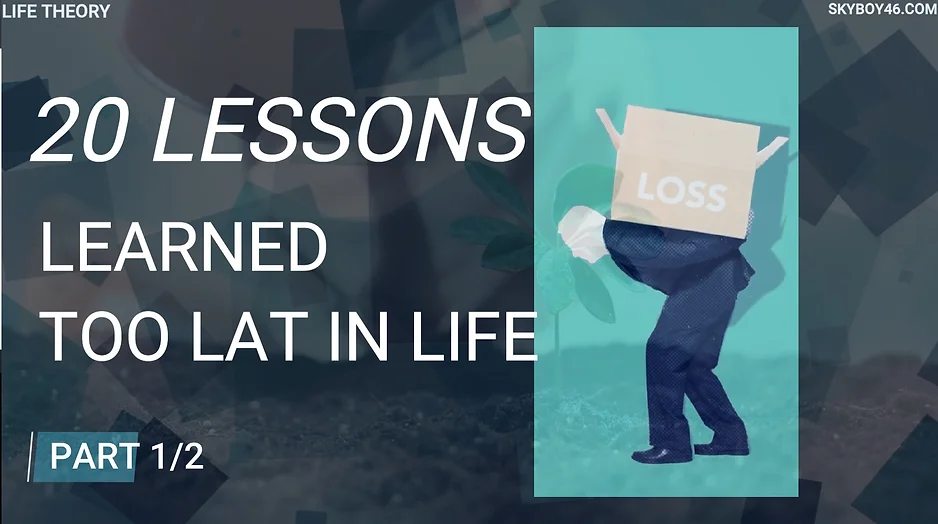Don’t Want To Read?
Watch/Listen To The Full Video on YouTube
Many people hesitate to take credit for their achievements, fearing judgment or rejection. But history proves that stepping into the spotlight can redefine entire industries. Take Jan van Eyck, a 15th-century painter who revolutionized the art world by signing his work—a practice unheard of at the time. His bold move asserted that artists deserved recognition, paving the way for future generations. Just like Van Eyck, you have the right to claim your work. Own your success, put your name on what you create, and let the world know what you’re capable of. Recognition isn’t just about ego—it’s about shaping the future by showing others what’s possible.
SUBSCRIBE: https://www.youtube.com/@LifeTheory46
Claim What’s Yours – The Power of Taking Credit – Life Stories 249
You know the saying—knowledge is power. But wisdom? That’s the ability to wield that power, to control it, and today, we’re going to talk about how to do just that.
Alright, with that, let’s jump into today’s story. In her book The Choice: Embrace the Possible, psychologist Edith Eva Eger shares a profound insight: to be passive is to let others decide for you, to be aggressive is to decide for others, but to be assertive is to decide for yourself and trust that you are enough, that there is enough. It’s a reminder that so many of us silence ourselves, not because someone forces us to, but because we allow it to happen. We hide our work, we avoid taking credit, and we shrink from the spotlight—often out of fear of scrutiny. But what if, instead of hiding, we embraced the courage to own our achievements, to step into the light, and let the world know what we’re capable of?
Let me tell you a story from the 15th century. Back then, there was an artist named Jan van Eyck. His name may not be as widely known as some of his contemporaries, but he created one of the most revolutionary works in art history. Not much is known about him personally—he came from Flanders, which is now part of Belgium, and by 1422, he was a court painter for the Count of Holland. Just a few years later, he became the court painter for Philip the Good, Duke of Burgundy, a powerful position that led to Van Eyck being sent on diplomatic missions and even being financially supported by the Duke after his death. But the real story isn’t just in his life—it’s in the legacy he left behind.
In 1434, Van Eyck painted The Arnolfini Portrait, a piece that at first glance shows a simple couple, but when you look closer, you see something groundbreaking. In the background, there’s an inscription, written in Latin: “Jan van Eyck was here, 1434.” It might seem like a small detail, but this was monumental. It was one of the very first times an artist signed their work. Before this, painters created art exclusively for the glorification of God. No one ever thought to take personal credit for their work. But Van Eyck? He changed the game. He broke away from tradition, stepping forward to say, “I made this.”
Think about that for a second. Van Eyck’s signature didn’t just claim his work—it marked a turning point in history. He was showing the world that artists, too, deserve recognition for their creations. And now, because of that courage, we remember him not just as a painter, but as a pioneer who reset the precedent for artists everywhere.
So here’s the lesson for today. If you’ve created something extraordinary, let the world see it. Don’t hide behind anonymity or the fear that your work won’t be appreciated. Your creation has value, and it deserves to be seen. It deserves your name on it, just as Van Eyck believed his work did. When you claim your achievements, you’re not just taking credit for what you’ve done—you’re paving the way for others to do the same.
In Van Eyck’s time, the idea of an artist signing their work was revolutionary, and yet, he believed in it so strongly that he continued to place his signature on many of his pieces. Some even bore the inscription, “Jan van Eyck made me,” because he believed in the importance of making his mark. Today, it’s much easier to get recognition for your work. Technology and global connectivity have made it possible for your ideas to reach the world in ways Van Eyck could never have imagined. But the principle remains the same: claim what’s yours.
Van Eyck wasn’t just breaking norms—he was creating new ones. He set a standard that allowed other artists to step forward and say, “I did this. I am worthy of recognition.” That ripple effect changed the art world forever. So why not take a page from his book? Why not believe in yourself just as fiercely?
Let’s take a moment to reflect. What would it look like if you started taking credit for your work? How would things change if you let go of the fear of criticism and stood tall, confident in your own value? When you show the world who you are and what you’re capable of, you inspire others to do the same. You create space for others to step forward and own their success. That’s the real power of taking credit.
Van Eyck was honored posthumously, receiving the title “King of Painters” long after he had passed. But we live in a time where recognition comes faster. You don’t have to wait years or even decades for your work to be appreciated. The world is ready to see what you’ve created—so don’t shy away from it. Let people know your name. Let them know what you’ve done. Because if you don’t, you’ll be the one left wondering what could have been.
Van Eyck’s story isn’t just about a painter who signed his work—it’s about a man who defied expectations, who went against the grain, and in doing so, changed the course of art history. And if he could do it in the 15th century, imagine what you can do today.
So, today, let’s take a lesson from Jan van Eyck. Claim your work. Put your name on what you’ve created. Stand tall, not just for yourself, but for everyone who’s watching, waiting for their own moment to break free of the shadows. The world is waiting for you to step into the light.
–> Read More Life Stories Here:
https://www.lifetheory.us
https://www.lifetheory.eu
Buy all of our Life Stories & Our Premium Learning Packs. Listen or Read to them anytime you want. Have them Forever.
You can get each monthly lesson on our website at https://www.skyboy46.com/store
SHARE THIS STORY
Visit Our Store
SHOP NOW
www.skyboy46.com & www.myskypet.com
Designed For Pet Lovers & Introverted Souls
Sport, Hobbies, Motivation, Music & Art






~EXPLORE MORE~
www.linktr.ee/skyboy46


